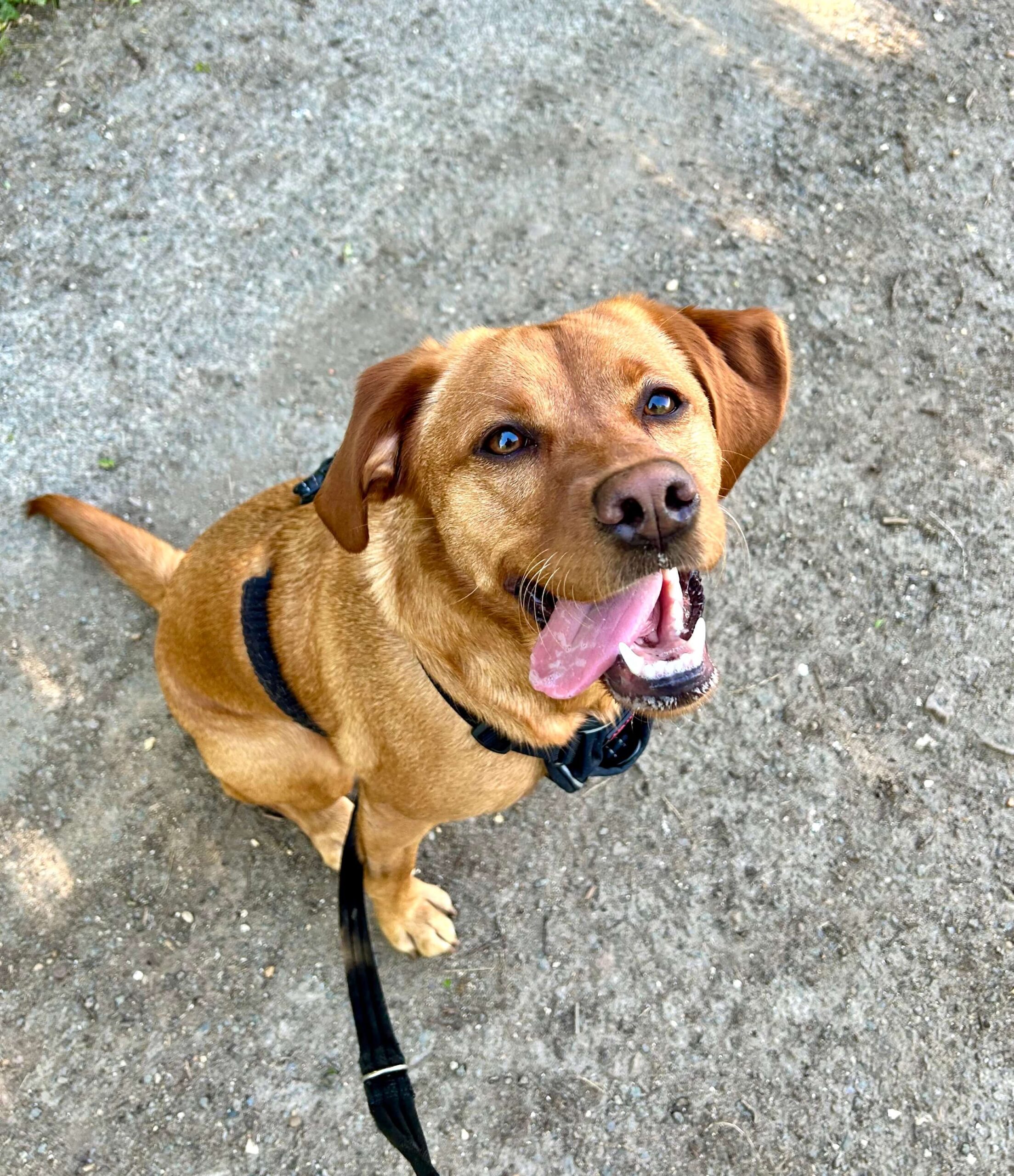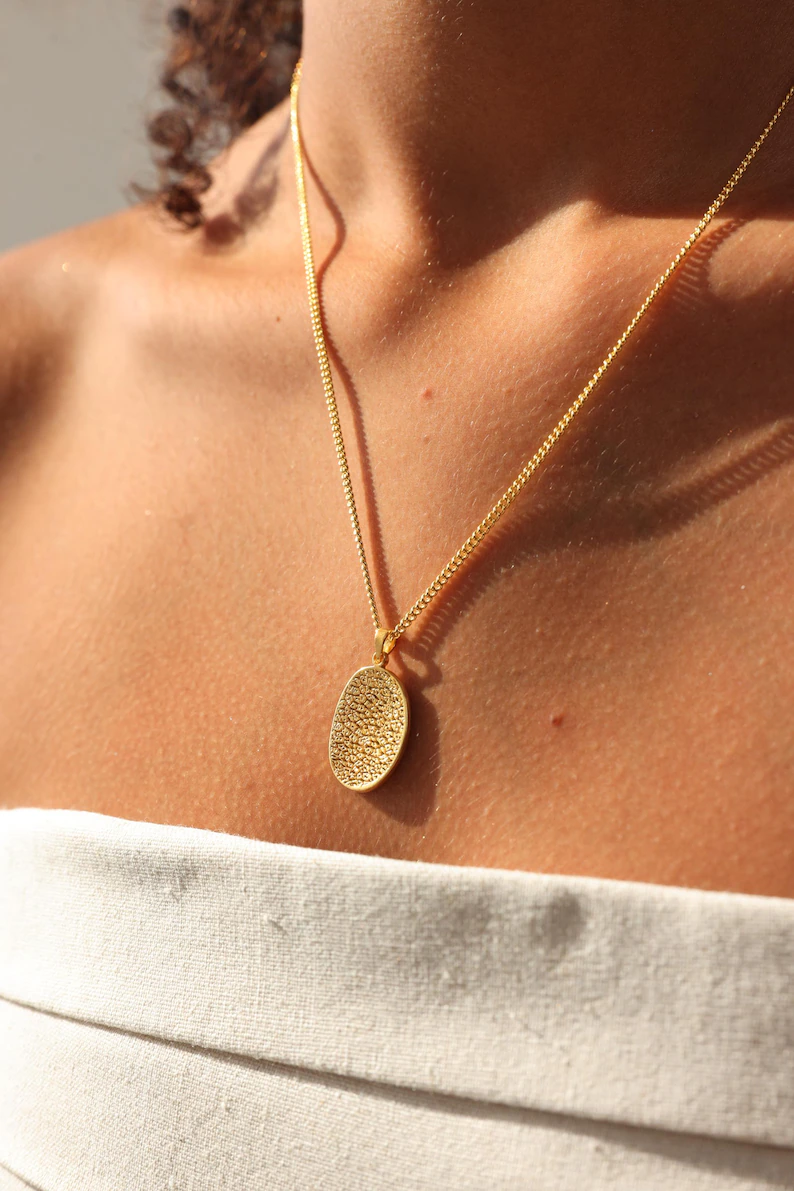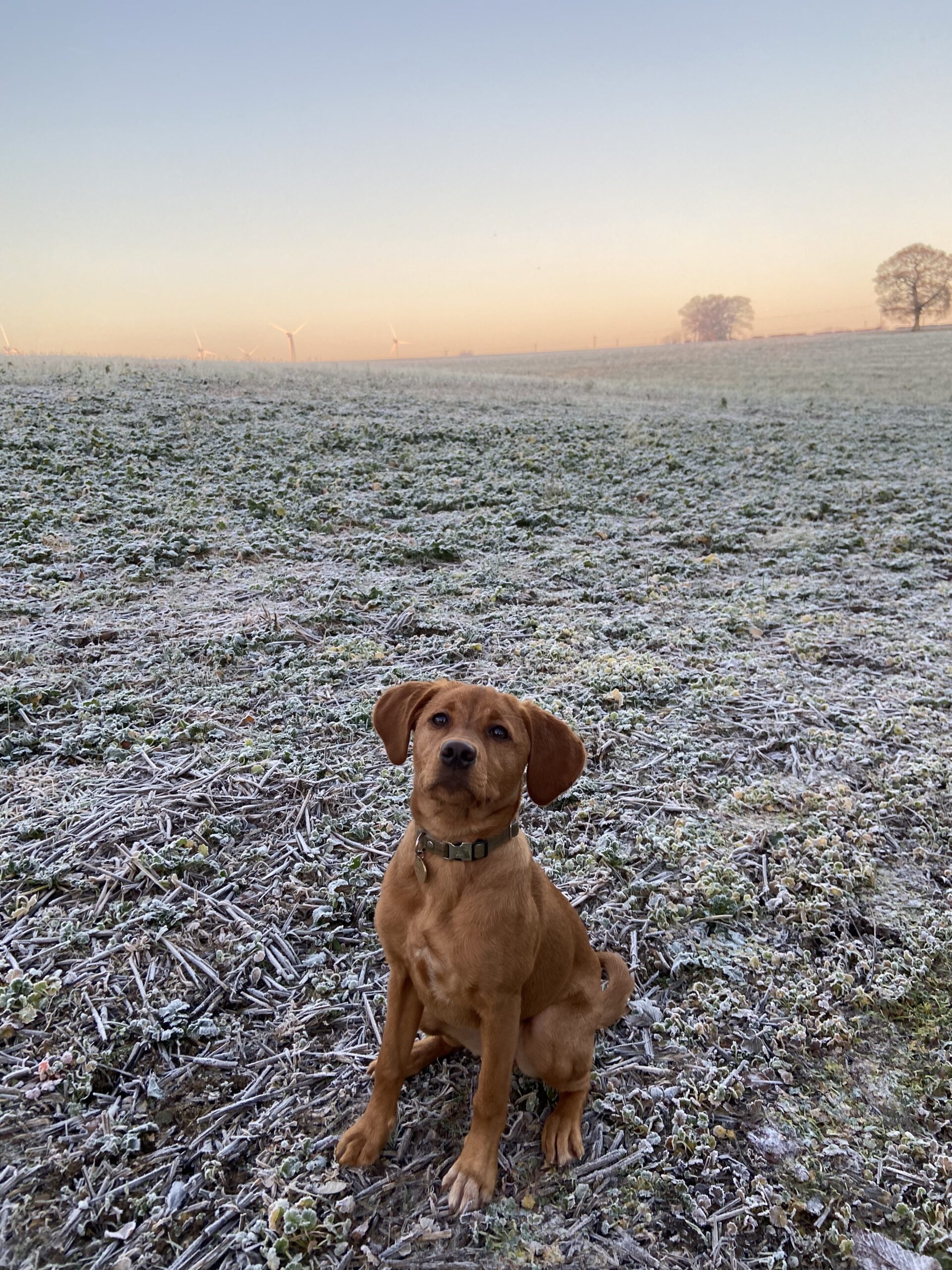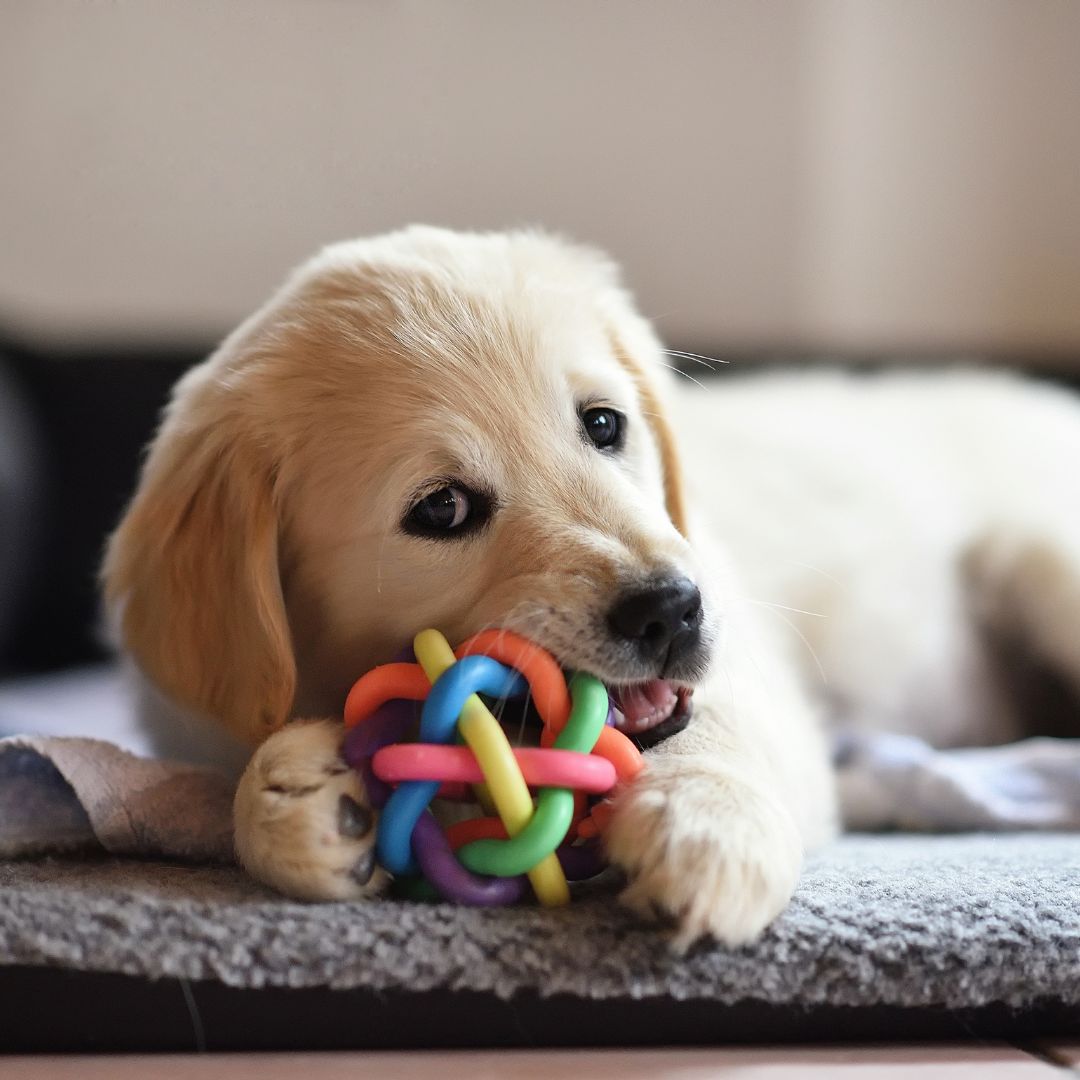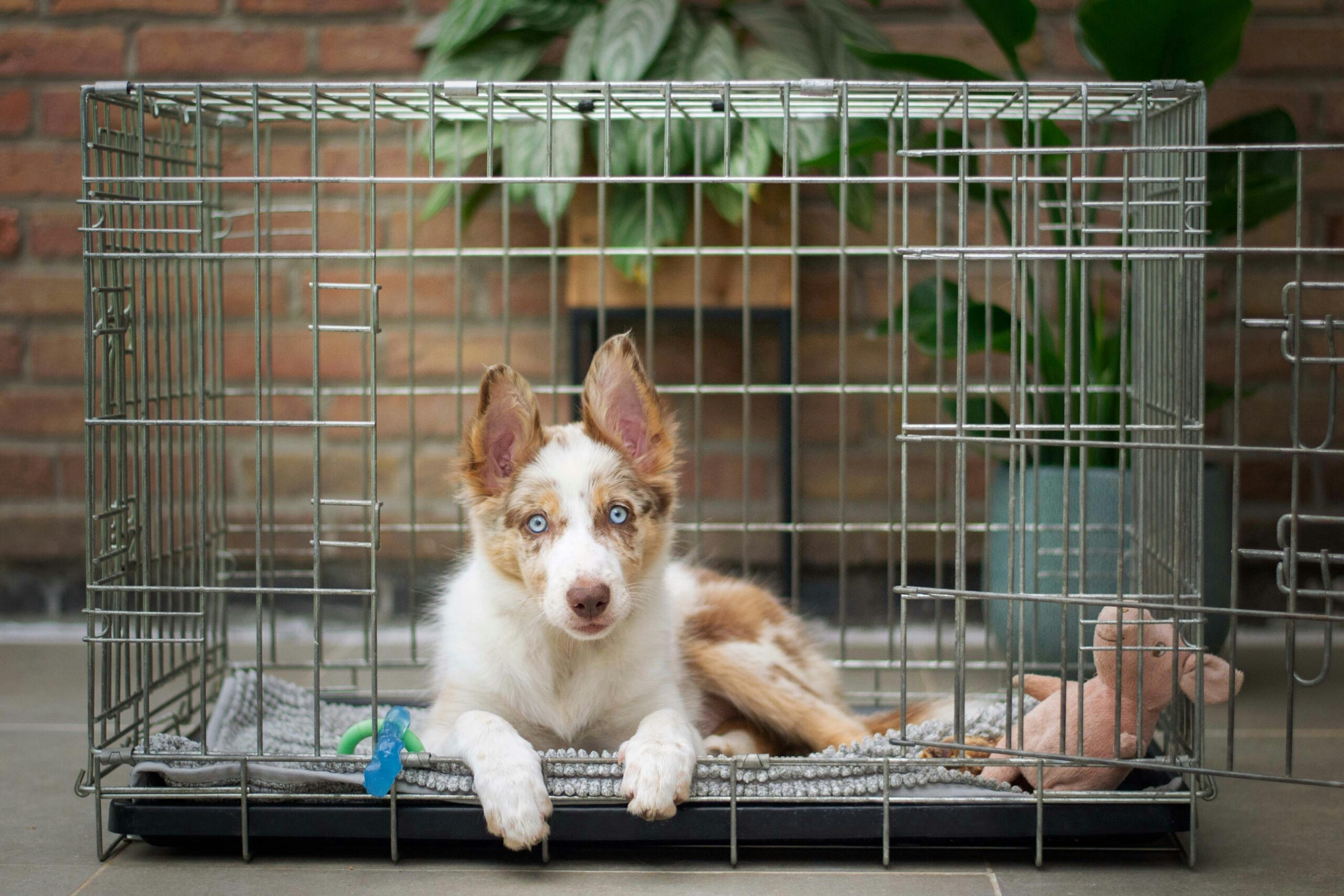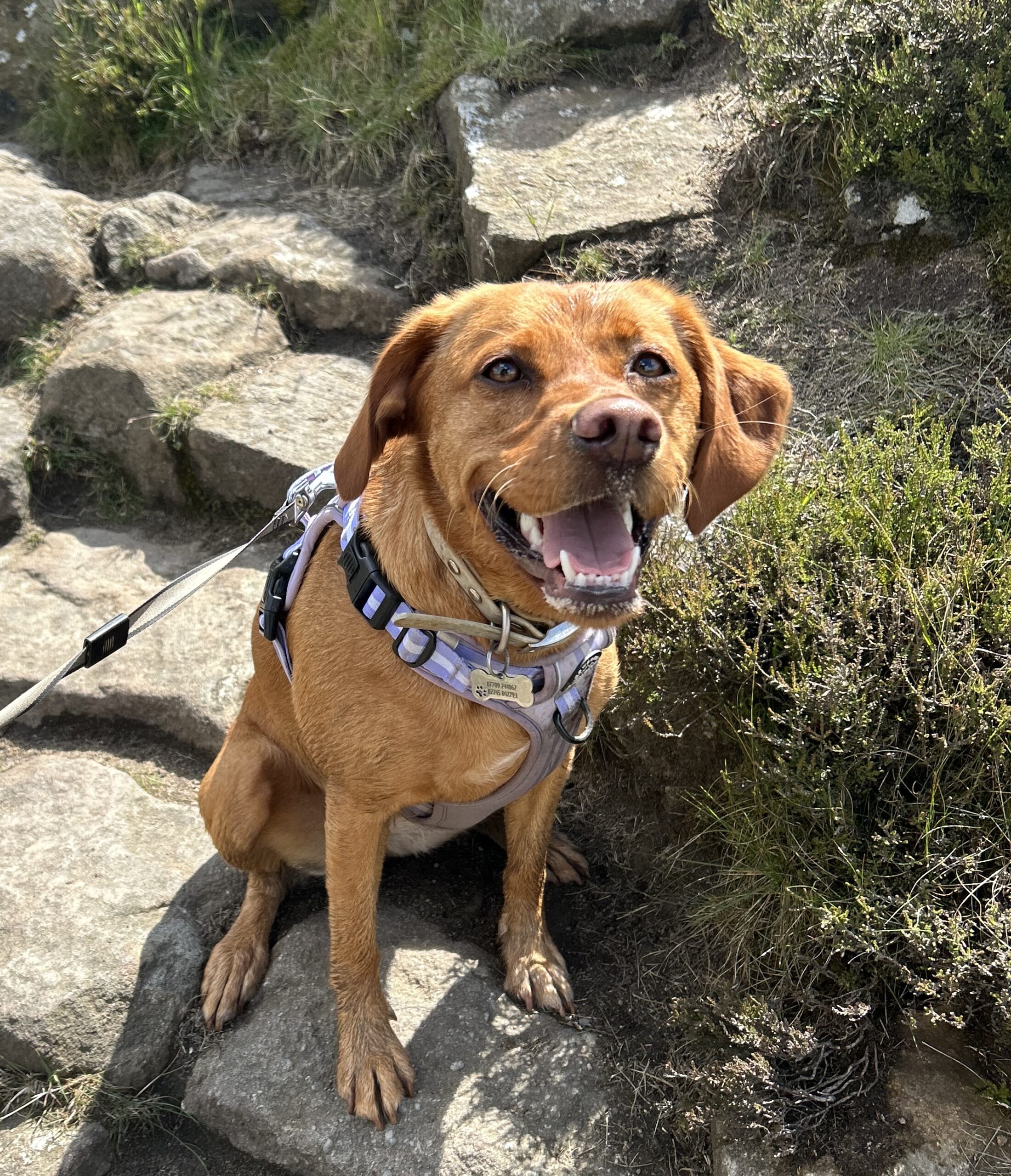Getting a puppy is one of the most exciting experiences you can have. You get to shop for all the essentials & accessories they need like toys, a collar, and a bed. Then you anxiously await the day you can collect them. Bringing a puppy into your home is also a whirlwind of chaos. These little creatures are only a couple of months old, they aren’t house trained and LOVE to chew whatever they can get their mouths on. Your heart will never feel so much love but also frustration at the same time – it can be testing. Here are some top tips on how to puppy proof your house before bringing your puppy home, to try and make the experience smoother.
This blog post contains affiliate links. This means as an Amazon Associate, I earn commission from qualifying purchases at no extra cost to you.
Sort out your shoe storage
I know it’s a cliche that a dog will eat your shoes, but it’s true! Mine has a particular taste for anything rubbery, like flip flops, sliders and crocs. Here is a harsh truth though – if your young dog chews your shoes, it’s your fault for leaving them out. It is not your dog’s fault, they don’t know any better. You will save yourself a lot of stress by just keeping your shoes out of reach at all times. Invest in some shoe storage wherever you normally leave your shoes.

Get your cleaning supplies ready
When thinking about how to puppy proof a house, toilet accidents are one of the first worries people have. Even with the strictest toilet training plan, accidents in the house are likely to happen with a puppy. It’s a good idea to get all the cleaning supplies you will need ready, rather than being caught out. There are 2 main things I would recommend – firstly, paper towels. Paper towels are the first port of call for picking up/mopping up any toilet accidents. I preferred these to using a cloth as you can just put them straight in the bin.
The next important thing is an enzymatic cleaner or cleaning solution. It’s important to use an odour neutralising cleaner rather than just any household cleaner. If your puppy can still smell it, they are likely to want to go to the toilet in the same spot over and over.
Here is a specialist cleaning solution on Amazon for cleaning anything that comes out of your puppy – urine, faeces or vomit – Simple Solution Extreme Pet Stain and Odour Remover.
Protect your wires
If you look closely, there are likely wires all over your house that you just don’t notice anymore. In our lounge alone there were loose wires for our TV, Wifi router, and 3 different lamps. It’s very important to make sure your puppy doesn’t chew wires, especially ones plugged into a live socket.
The best way to prevent this without throwing out all your electricals, is to use cable tidy solutions. I used this exact cable trunking kit from Amazon to tidy up all my cables in my living room. It was so easy to use – you can just measure how much you need, cut to length, then peel and stick straight onto your wall. I did this a year and a half ago, and it is still stuck on like I did it yesterday. You can even paint over it to make it match your wall colour. Not only does this tip help with puppy proofing your house, it also makes your house look tidier.
Another solution if you are unable to hide your wires behind trunking, is to protect your cords with a cord protector sleeve. This ‘PetCords Dog and Cat cord protector’ simply goes over your cables and provides an extra layer of protection from little puppy teeth.
Plants: Make sure they are pet friendly, and out of reach
There are some common house plants which you may be surprised to learn could make your dog poorly. Rather than being a tip for how to puppy proof your house, this is more a tip to keep your puppy safe & healthy! Some examples of plants which could harm your dog include Aloe vera, pothos, jade plants, and lilies. The main risk of your dog getting poorly from these plants is normally only if they have eaten them (though please do your own research for your specific house plants). As we know, puppies will try and chew anything! They use their mouths to explore their environment. Make sure any house plants are high and out of reach, or just give them away to a friend instead.
The same goes for garden plants. Many common plants such as foxgloves, azaleas, and tulips can be poisonous to dogs if ingested. So do some research to ensure you only have dog safe plants, so you don’t end up with an emergency vet trip.

Tidy up your clutter
As well as shoes, just have a really good look around your house and see what items are at puppy level. When you have identified these items, try and think of ways you can tidy them up to minimise the risk of your puppy causing any damage. For example, do your children leave toys all over the lounge floor? Maybe get a toy trunk for that room so they can be easily tidied away.
Just like with the shoes and wires, your puppy will try and play with anything they find. So it’s best just to be proactive by minimising the risk of any damage or frustration. Hopefully your puppy will learn in time that only their toys are okay to chew, and nothing else in the house.
Roll up your rugs
If you have any rugs around your house, consider rolling them up until your puppy is house trained. Yes it might feel a bit cold and empty in your lounge for a while, but it’s better than continually scrubbing urine out of the rugs. When I got my puppy, I rolled up all our downstairs rugs for the first 3-4 weeks, and put them back out when I thought the dog was house trained. Of course, as soon as she saw this exciting new surface in the house she did a wee on a straight away! So it isn’t the most foolproof plan, but it definitely reduced the amount of cleaning it would have needed otherwise.
Get prepared for crate training
If I could tell any new puppy owners one tip, it would be to crate train their puppy. When thinking about how to puppy proof a house, crate training can be more work than the other items on this list however it will be the most worth it, I promise. Crate training provides a safe environment for your puppy, so you can leave them alone with peace of mind. You know they aren’t causing damage to the house, and they can’t hurt themselves. Not only this, it helps them to settle wherever you go – if you take the crate with you, they always have their safe space. It can be tough getting through the first couple of weeks, but it is so worth it in the long run. For advice on crate training, check out this blog post.



